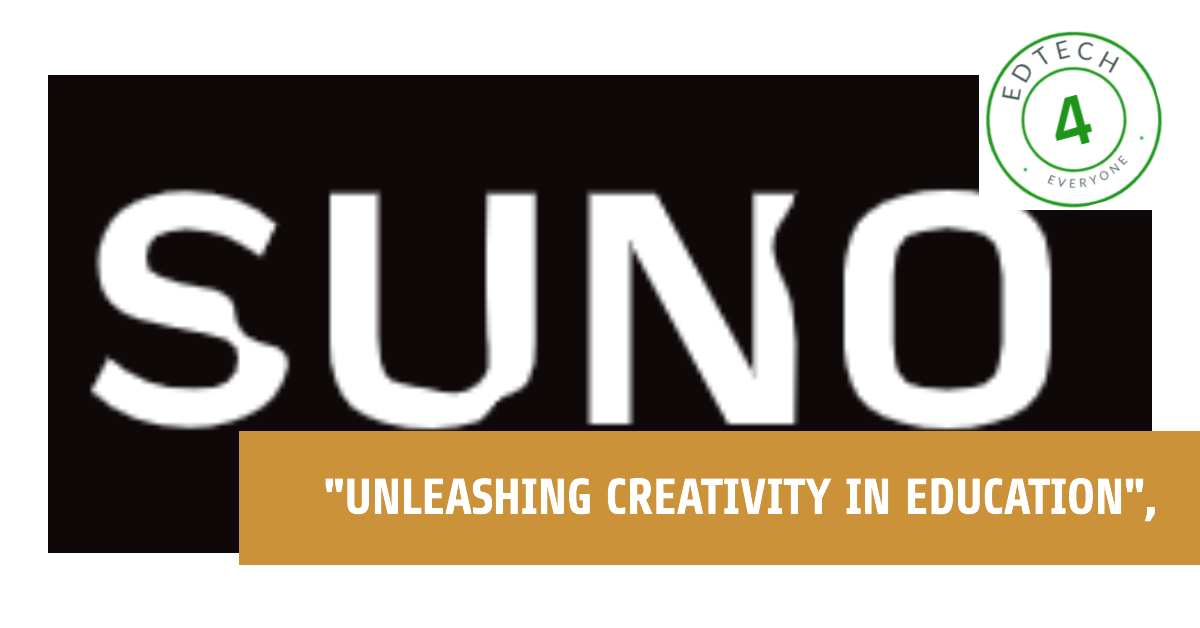
Introduction
In the ever-evolving landscape of educational technology, innovative tools are constantly emerging to enhance learning experiences. One such tool I’ve been using recently is Suno, a revolutionary AI song-making app, unleashing creativity in learning via music creation. Whether you’re an educator looking to engage students in new ways or a student eager to explore your creative potential, Suno offers a unique platform to make music creation accessible to everyone.
How to Get Suno
Getting started with Suno is simple and straightforward. You can access Suno by visiting their website and signing up for a free account. The app is also available for download on iOS and Android devices. There is a basic plan that is free – I’d recommend that to start with, for heavier use and access to the latest model there are pro and premium plans – a bit pricey though if you are only going to dabble with the software.

Once you’ve signed up, you’ll have access to a variety of features that allow you to create and customise your own songs.
How to Use Suno
Using Suno is pretty user-friendly. Here’s a step-by-step guide to help you get started:
- Sign Up and Log In: Visit the Suno website or open the app on your device. Sign up using your email or connect through social media accounts or big tech sign ins via Microsoft, Google or Apple.
- Create a Song: Click on the “Create” button and enter a prompt or description of the song you want to make. Suno’s AI will generate two unique versions of your song with AI lyrics based on your prompt. One of the coolest features of Suno is the ‘custom’ tab, which allows you to enter your own lyrics—or even your students’ lyrics—and then choose a musical style to accompany them. For instance, one of my groups mentioned they liked KSI. So, (after Googling him) discovered that his music styles were hip-hop, grime (yup, that’s a real thing), and pop. I entered these into Suno, and the result was a catchy tune that really brought their lyrics to life (see Oil Rig song at end of the blog)!
- Customise Your Song: Listen to the generated versions and choose the one you like best. You can further customise it by adding new verses, changing the style, or tweaking the lyrics (however many of these are subscription features).
- Download and Share: Once you’re satisfied with your creation, download it as an audio file or a lyric video. You can share your song with colleagues and students or even use it in your educational projects.
In the YouTube clip I had lyrics of a song previously prepared. Suno can write the lyrics for you – prompt it with some of the lesson content that you want in the song.
Useful Examples for Education
Suno is not just a tool for music enthusiasts; it has significant potential in the educational sector. Here are some ways you can integrate Suno into your teaching:
- Enhancing Learning with Music: Use Suno to create songs that explain complex concepts in subjects like history, science, or literature. For example, a song about the “cells” can make biology lessons more appealing and memorable. I created a song about a joiner’s skills and qualities for a Y10 careers lesson – the pupils got to choose the music style and also helped create the lyrics. Creating a song using lesson content is also great way to reinforce learning by representing information in a different more engaging way.
- Creative Writing and Storytelling: Encourage students to write their own lyrics and use Suno to turn their stories into songs. This can be a fun way to develop their writing and storytelling skills. I think this is one of the best ways of using Suno to engage students – allowing pupils to use their own creativity while also getting a really nice product/learning tool at the end of the process.
- Social-Emotional Learning: Songs can be powerful tools for exploring emotions and social themes. Create songs that help students understand and express their feelings, fostering a supportive classroom environment.
- Background Music for Study Sessions: Generate instrumental tracks that students can use as background music while studying. Music has been shown to aid concentration and memory retention, making study sessions more effective.
Clips
In this audio clip, Year 10 pupils helped use AI to create as song about a Joiner called ‘The Wood Whisperer’. This won’t win any Grammy Awards but the class had a good laugh making it.
Year 9 History played about a bit more with the style of music for their Sea Shanty about the Spanish Armada in 1588. I think this version is much better than the two in the YouTube clip above. The boys certainly thought so – plenty of desks used as drums to beat out the rhythm!
Final one here – Y9 LLW class investigating the Qualities and Skills of oil rig workers and underwater welders (topic entirely their choice). Additional use of Adobe express here to edit the length of the Suno audio and then ‘matched’ with images for a new video soundtrack. I uploaded the final product to YouTube and shared on their class Team. Lyrics /random words courtesy of 9D 😨!
Conclusion
Suno is a versatile and innovative tool that brings the power of music creation to everyone. By integrating Suno into educational settings, educators can enhance learning experiences, foster creativity, and make lessons more engaging. Whether you’re creating songs to explain complex concepts or encouraging students to express themselves through music, Suno is a valuable addition to any digital educational toolkit.
And most importantly it’s great fun!
31. Max Efficiency with Effective Prompting in Copilot – EdTech4Everyone


One response to “33. Unleashing Creativity in Learning with Suno”
Looks fantastic